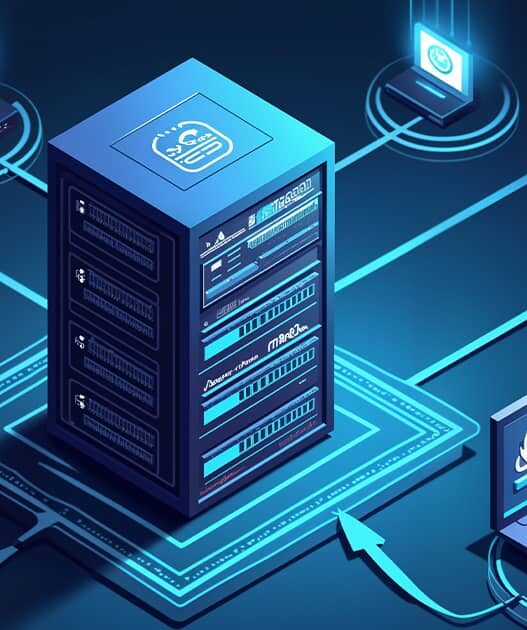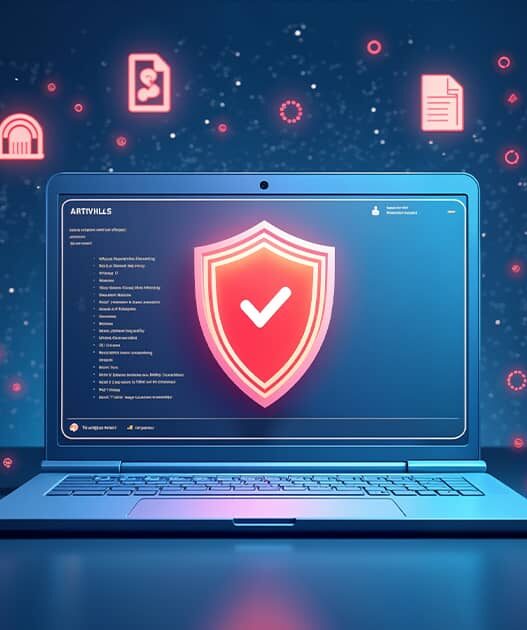Introduction
Torrenting can be a convenient way to download large files, but it comes with certain risks, such as encountering fake torrents and malicious files. Cybercriminals often disguise malware, viruses, and other harmful files as legitimate torrents, putting your device and data at risk. Knowing how to spot and avoid fake torrents is crucial for safe torrenting.
In this article, we’ll guide you through how to identify fake torrents, protect yourself from malware, and ensure a safe torrenting experience.
Common Risks Associated with Fake Torrents
1. Malware and Viruses
Fake torrents often contain malicious files, such as viruses, ransomware, or spyware. These files can infect your device, steal personal information, or encrypt your data, demanding a ransom to restore access.
2. Phishing Attempts
Some fake torrents redirect users to phishing websites that mimic legitimate services. These sites may ask for personal information or login credentials, which can be used for identity theft or fraud.
3. Low-Quality or Corrupted Files
Fake torrents may offer poor-quality files, incomplete downloads, or corrupted data. These files may not contain the content you’re looking for and could waste your time and bandwidth.
How to Spot Fake Torrents
1. Check the Seeder-to-Leecher Ratio
One of the easiest ways to identify a fake torrent is by looking at the seeder-to-leecher ratio. A legitimate torrent usually has a balanced or higher number of seeders (users who have the full file and are sharing it) compared to leechers (users who are downloading). A torrent with a very low seeder count or an unusually high number of leechers may be fake.
- Tip: Avoid torrents with very few seeders and an unusually high number of leechers, as this could indicate a low-quality or malicious file.
2. Verify the File Size
Fake torrents often have file sizes that don’t match the content they claim to provide. For example, if you’re downloading a high-definition movie, the file should be several gigabytes in size. If the file size is unusually small (e.g., 50 MB for a full-length movie), it’s likely a fake torrent.
- Tip: Compare the file size with other torrents of similar content to ensure it’s within a reasonable range.
3. Read User Comments and Reviews
Most torrent websites allow users to leave comments and reviews about the torrents they’ve downloaded. Take the time to read these comments, as they often contain useful information about the quality of the file and whether it’s safe to download. If several users report that a file is fake or contains malware, avoid downloading it.
- Tip: Look for torrents with positive feedback and multiple comments verifying that the file is legitimate.
4. Check the File Type
Pay attention to the file extension of the torrent. Legitimate video files usually have extensions like .mp4, .mkv, or .avi, while legitimate software files may have .exe or .dmg extensions. Be wary of file extensions like .exe for what should be a video file, as this is a common indicator of malware.
- Tip: Avoid downloading torrents with suspicious file types, such as .exe for movies or music.
5. Check the Uploader’s Reputation
Many torrent websites allow trusted users or verified uploaders to share files. Torrents from verified uploaders are generally more reliable and less likely to contain malware. Check the uploader’s history and reputation to ensure they have a track record of sharing legitimate content.
- Tip: Download torrents from trusted or verified uploaders to reduce the risk of encountering fake torrents.
Protecting Yourself from Malicious Torrents
1. Use a VPN
A VPN (Virtual Private Network) can help protect your privacy by encrypting your internet connection and hiding your IP address. While a VPN won’t protect you from downloading fake torrents, it can prevent malicious actors from tracking your online activity or targeting you based on your torrenting behavior.
- Tip: Use a VPN with a strict no-logs policy and P2P-optimized servers, such as ExpressVPN or NordVPN, for safe torrenting.
2. Enable an Antivirus Program
An antivirus program is essential for detecting and blocking malware or viruses from fake torrents. Set your antivirus to automatically scan downloaded files before opening them to prevent malicious software from infecting your device.
- Tip: Use reputable antivirus software like Bitdefender, Kaspersky, or Norton, and keep it updated to ensure maximum protection.
3. Scan Torrents with a Malware Checker
Before opening any downloaded file, use a malware checker to scan for viruses or malicious code. Tools like VirusTotal allow you to upload files for a thorough scan, checking them against multiple antivirus databases.
- Tip: Always scan files with VirusTotal or a similar tool before opening or running them, especially if they were downloaded from an unfamiliar source.
4. Avoid Clicking on Suspicious Links
Many fake torrents come with a description or file that prompts users to visit an external website or download additional software. Avoid clicking on these links, as they are often used to redirect you to phishing sites or deliver malware.
- Tip: Stick to downloading the torrent file only and avoid any external websites or additional files that the torrent uploader suggests.
Best Torrent Sites for Safe Downloads
Using reputable torrent sites can significantly reduce the risk of encountering fake torrents. Here are some of the most trusted torrent sites known for hosting legitimate files:
1. The Pirate Bay
One of the most well-known torrent sites, The Pirate Bay features a wide variety of torrents, including movies, music, software, and more. The site uses a system of trusted uploaders and user comments to help you avoid fake torrents.
2. RARBG
RARBG is known for its high-quality torrents and active community. The site has a robust verification system for uploaders and features user comments and reviews to help you identify safe files.
3. 1337x
1337x is a popular torrent site that offers a wide range of content, including movies, TV shows, games, and software. It has an easy-to-navigate interface, and its community-driven approach ensures that users can identify and avoid fake torrents.
Common Red Flags to Watch Out For
- Unusually Small or Large File Sizes: A torrent claiming to be a high-definition movie but only a few megabytes in size is likely fake.
- Suspicious File Extensions: A video file with an .exe or .bat extension should be avoided.
- Too Few Seeders: Torrents with very few seeders may indicate a fake or low-quality file.
- Prompts to Download Additional Software: If the torrent description or uploader asks you to download a specific codec or program, it’s likely a scam.
Conclusion
Fake torrents and malicious files are a real threat to your device and personal data, but by following the guidelines in this article, you can significantly reduce the risk of downloading unsafe content. Always check the seeder-to-leecher ratio, verify the file size and type, and use trusted torrent sites. Additionally, using a VPN, antivirus software, and malware checkers will help protect you from threats while torrenting.
















